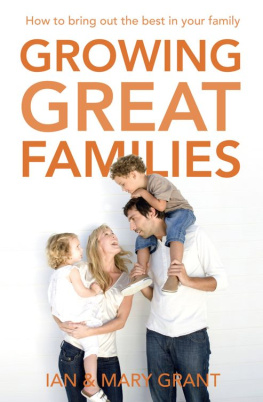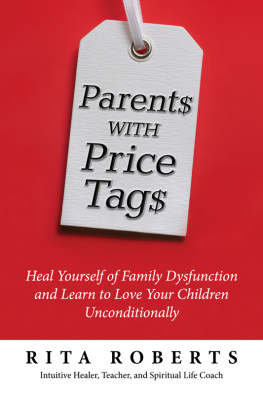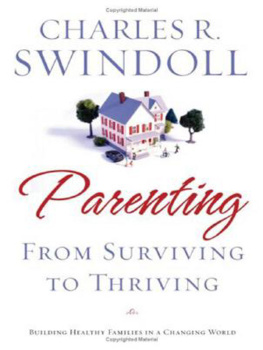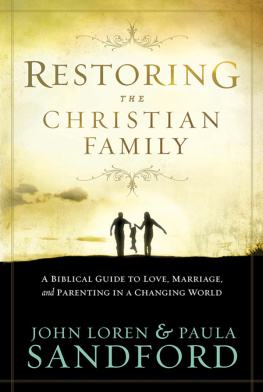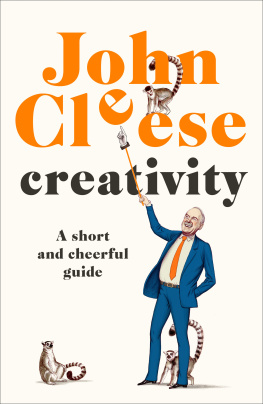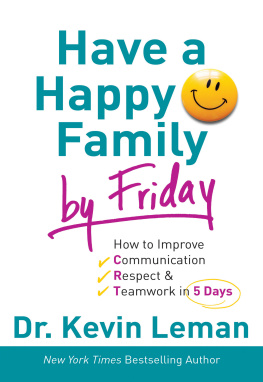FAMILIES
and how to survive them
Most people have emotions they can't handle, so they 'screen them off, hiding them from others and even themselves. They often choose partners with the same inhibitions, which are then passed on to their children... from generation to generation.
Using the most modern experiences of family therapy this book shows how understanding can lead to progress, the taboos can be broken down, and development of healthy relationships and families can take place.
The subject is vital to us all, and the authors deal with it lucidly and incisively, with a lightness of touch that is brilliantly served by Bud Handelsman's cartoons.
Robin Skynner has been a pioneer in group and family therapy techniques of treatment and one of the founders of both the Institute of Group Analysis and Institute of Family Therapy. He is the author of the textbooks One Flesh: Separate Persons; Principles of Family and Marital Psychotherapy, Explorations with Families: Group Analysis and Family Therapy and Institutes and How to Survive Them; Mental Health Training and Considtation.
John Cleese was born in Weston-super-Mare in 1939, got 'A' levels in science at the Clifton College Sports Academy, taught for two years and then studied Law at Cambridge, where he joined the Footlights. Since then he has been a comic.
Also by Robin Skynner
and John Cleese and
available from Vermilion
LIFE
and how to survive it
This eBook is copyright material and must not be copied, reproduced, transferred, distributed, leased, licensed or publicly performed or used in any way except as specifically permitted in writing by the publishers, as allowed under the terms and conditions under which it was purchased or as strictly permitted by applicable copyright law. Any unauthorised distribution or use of this text may be a direct infringement of the author's and publisher's rights and those responsible may be liable in law accordingly.
ISBN 9781407011035
Version 1.0
www.randomhouse.co.uk
Copyright 1983 Robin Skynner and John Cleese have asserted their moral right to be identified as the authors of this work in accordance with the Copyright, Designs and Patents Act, 1988.
Copyright Illustrations 1983 Methuen London.
Compiled by Behram Kapadia.
This electronic book is sold subject to the condition that it shall not by way of trade or otherwise, be lent, resold, hired out, or otherwise circulated without the publisher's prior consent in any form other than that in which it is published and without a similar condition including this condition being imposed on the subsequent purchaser
First published in the United Kingdom 1983.
First paperback edition published 1984 by Methuen, London.
Reissued 1989 by Mandarin paperbacks.
Cedar edition first published 1993. Reissued 1996. Reprinted 1996, 1997.
First published by Vermillion in 1997.
20 19 18 17 16 15 14
This edition published in the United Kingdom in 1997 by Vermilion an imprint of Ebury Press
Random House UK Limited
Random House
20 Vauxhall Bridge Road
London SW1V 2SA
Random House Australia (Pty) Limited
20 Alfred Street, Milsons Point, Sydney
New South Wales 2061, Australia
Random House New Zealand Limited
18 Poland Road, Glenfield
Auckland 10, New Zealand
Random House (Pty) Limited
Isle of Houghton, Corner of Boundary Road & Carse O'Gowrie,
Houghton 2198, South Africa
Random House Publishers India Private Limited
301 World Trade Tower, Hotel Intercontinental Grand Complex,
Barakhamba Lane, New Delhi 110 001, India
The Random House Group Limited Reg. No. 954009
www.randomhouse.co.uk
A CIP catalogue record for this book is available from the British Library.
ISBN: 9781407011035
Version 1.0
Acknowledgements
We would like to thank the following friends and colleagues for sparing time to read and comment on parts of the manuscript, or for providing information and advice; however, responsibility for the views expressed, and for any errors and omissions, remains, of course, entirely our own:
Jane Abercrombie, Susan Barrows, Ruth Berkowitz, Dennis Brown, Arnon Bentovim, John Bowlby, John Byng-Hall, Douglas Connor, Chris Dare, Shirley Dare, Ronald Eyre, Lionel Kreeger, Marianne Kreeger, Malcolm Pines, Denis Robinson, Margaret Robinson, Meg Sharpe, David Skynner, Prue Skynner, Katrin Stroh and Barbara Trentham.
We would particularly like to acknowledge the quite exceptional editorial contributions of Christopher Falkus and Ann Mansbridge, and we are also most grateful to Daphne Day, Dee Edwards, Joan Pakenham-Walsh, Briar Silich and Joan Snell for their sterling work in typing the many drafts.
The extract from Edward Albee's Who's Afraid of Virginia Woolf? is reproduced by permission of Jonathan Cape Ltd, London, and Atheneum Publishers Inc., New York.
Author's Note
We have used 'he' throughout this book when referring to the baby or child, not for any sexist reason, but because we felt it enabled us to refer clearly to 'he' and 'she' in our frequent discussions about the baby and the mother.
To Prue and Barbara
Introduction
Why we wrote this book
John Ten years ago, I went into group therapy. I did this for two reasons. First, I had suffered for at least two years from low-grade 'flu symptoms which my doctor wasn't able to cure. Eventually, after three full check-ups, he advised me that the cause was probably psychosomatic, and suggested that a psychological approach to the problem might prove fruitful. At about the same time I was having problems connected with my first marriage and had come to the conclusion that I was too confused to sort them out without outside help in fact, I remember thinking at that time that I lacked the intellectual tools to understand what was going on. I now realise that I also lacked then certain emotional experiences that I needed to go through in the group if I was to solve the problems that were bothering me.
Of course, I didn't enter the Wonderful World of Shrinks very enthusiastically because I had all the usual British reservations about the Whole Psychiatry Business. Nevertheless, despite my scepticism I might almost say mistrust I began to attend a therapy group. It was run by Robin Skynner and his wife Prue, who worked together as co-therapists. There were seven other people in the group, including several couples. And so, for an hour and a half late every Thursday afternoon, the ten of us sat in a circle and just talked, for the next three and a half years! The people in the group changed over this period, of course; as some felt ready to leave, they were replaced by new recruits.
After about a year, I began to feel I was undergoing the most interesting experience of my adult life. For a start, once we'd all lowered our barriers a bit, I was able to see my fellow group members behaving in a freer, more open way than you can ever hope to observe in normal social life, except perhaps with your two or three most intimate friends. Without wishing to trivialize what was happening in the group, I remember thinking that it made most film and TV drama seem pale, artificial and unconvincing by comparison. But such a thought may imply that I was trying to distance myself from the group's proceedings. I wasn't. I was very thoroughly involved, in a sense that as the months progressed I went through a very wide range of moods and emotions, some of them quite new and difficult to handle. But apart from these emotional experiences, and also certain discoveries I made about myself which didn't quite fit my image of myself at that time! the most startling realisation was that some of my deepest ingrained attitudes were being questioned for the first time especially some of my basic assumptions about man/woman relationships. These were being exposed to scrutiny in an entirely new way, so that I was beginning to wonder if the ideas that I'd grown up with in Weston-super-Mare really worked for me.



